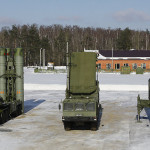MDAA Press Release:
London – April 24, 2015 — NATO’s European missile defense policy, long aimed only at countering missile threats from the Middle East, should be adapted to address the threat of short-range missiles from Russia, said Riki Ellison, chairman of the Missile Defense Advocacy Alliance in a statement yesterday.
“Today in Europe, the direct ballistic and cruise missile threats are from Russia. The deterrence and defense posture of Europe…must be determined by the threats it faces.” Ellison said.
Ellison highlighted Russia’s Iskandar ballistic missiles and shipping container-launched Club-K cruise missiles to be of particular concern, along with the presence of advanced S-300 and S-400 air defense systems in Kaliningrad near NATO countries.
“Russia has a demonstrated capability for complete access denial to the entire airspace of the NATO member countries of Latvia, Estonia, Lithuania, half of Poland and half of Romania,” he said, and noted a “concerning gap of capability within NATO” to address this strategic situation. Ellison went on to recommend specific changes to U.S. European missile defense policy, known as the European Phased Adaptive Approach (EPAA).
“This immediate security challenge requires a shift or adaptation of President Obama’s EPAA to enable NATO countries to provide resources, development, manpower and systems that can be inter-operable and integrated to field short-range air and missile defenses. A rapid response short-range missile defense force for NATO made up of contributions and forces from NATO countries hosted by a NATO country is part of a necessary solution.”
“Lessons from the past for which NATO was formed 66 years ago this month must be reflected upon.” he concluded.
Read Riki Ellison’s Full Statement



